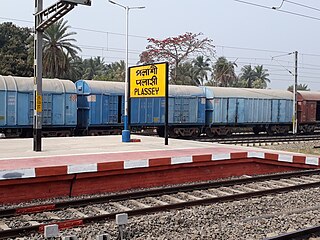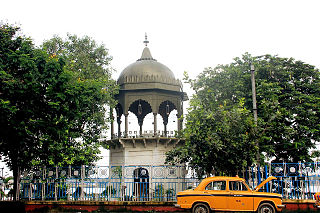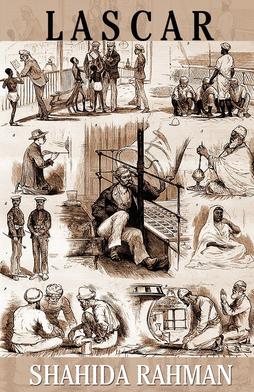
West Bengal is a state in the eastern portion of India. It is situated along the Bay of Bengal, along with a population of over 91 million inhabitants within an area of 88,752 km2 (34,267 sq mi) as of 2011. The population estimate as of 2023 is 102,552,787. West Bengal is the fourth-most populous and thirteenth-largest state by area in India, as well as the eighth-most populous country subdivision of the world. As a part of the Bengal region of the Indian subcontinent, it borders Bangladesh in the east, and Nepal and Bhutan in the north. It also borders the Indian states of Jharkhand, Odisha, Bihar, Sikkim and Assam. The state capital is Kolkata, the third-largest metropolis, and seventh largest city by population in India. West Bengal includes the Darjeeling Himalayan hill region, the Ganges delta, the Rarh region, the coastal Sundarbans and the Bay of Bengal. The state's main ethnic group are the Bengalis, with the Bengali Hindus forming the demographic majority.

Kolkata is the capital and largest city of the Indian state of West Bengal. It lies on the eastern bank of the Hooghly River, 80 km (50 mi) west of the border with Bangladesh. It is the primary financial and commercial centre of eastern and northeastern India. Kolkata is the seventh most populous city of India with an estimated city proper population of 4.5 million (0.45 crore). It is the centre of the Kolkata Metropolitan Region, one of the most populous metropolitan areas in the world with a population of over 15 million residents. Kolkata is the de facto cultural capital of India and historically and culturally significant city in the historic region of Bengal. It is the second largest Bengali-speaking city in the world. It has the highest number of Nobel laureates among all cities in India.

A lascar was a sailor or militiaman from the Indian subcontinent, Southeast Asia, the Arab world, British Somaliland or other lands east of the Cape of Good Hope who was employed on European ships from the 16th century until the mid-20th century.

Palashi or Plassey, pronounced[ˈpɔlaʃi], Hindustani pronunciation:[pəˈlaːʃi]) is a town on the east bank of Bhagirathi River, located approximately 50 kilometres north of the city of Krishnanagar in Kaliganj CD Block in the Nadia District of West Bengal, India. The nearest major town is Beldanga. It has its own two local gram panchayat.

The Kolkata International Film Festival (KIFF) is an annual film festival held in Kolkata, India. Founded in 1995, it is the third oldest international film festival in India. The festival is organized by the West Bengal Film Centre under the West Bengal Government. In 2019, it was held from 8 November to 15 November.

The Architecture of Bengal, which comprises the modern country of Bangladesh and the Indian states of West Bengal, Tripura and Assam's Barak Valley, has a long and rich history, blending indigenous elements from the Indian subcontinent, with influences from different parts of the world. Bengali architecture includes ancient urban architecture, religious architecture, rural vernacular architecture, colonial townhouses and country houses and modern urban styles. The bungalow style is a notable architectural export of Bengal. The corner towers of Bengali religious buildings were replicated in medieval Southeast Asia. Bengali curved roofs, suitable for the very heavy rains, were adopted into a distinct local style of Indo-Islamic architecture, and used decoratively elsewhere in north India in Mughal architecture.

The culture of West Bengal is an Indian culture which has its roots in Bengali literature, music, fine arts, drama and cinema. Different geographic regions of West Bengal have subtle as well as more pronounced variations between each other, with Darjeeling Himalayan hill region and Duars showing particularly different socio-cultural aspects.
The sport of cricket was introduced to the Indian subcontinent by sailors and traders of the English East India Company in the 17th and 18th centuries. The earliest known record of cricket in India dates from 1721 and the first club had been founded by 1792. In the 1886 and 1888 summer seasons, the Parsees cricket team toured England. In the winter of 1889–90, a team of English players was the first to tour India, followed by another in the 1892–93 season. That tour coincided with the beginning of competitive cricket in the country as the Parsees won the prestigious Bombay Presidency Match against the Europeans cricket team. By 1912–13, the tournament had become the Bombay Quadrangular with the addition of the Hindus cricket team and the Muslims cricket team. Similar tournaments began soon afterwards in Calcutta and Madras. By the end of 1918, first-class cricket was established in India.

The Victoria Memorial is a large marble monument dedicated to Queen Victoria, the Empress of India (1876-1901) facing the Queens Way on the Maidan in Central Kolkata. It was built between 1906 and 1921 by the British Raj.

South Park Street Cemetery, formerly known as the 'Great Christian Burial Ground', was one of the earliest non-church cemeteries in the world. The cemetery houses numerous graves and monuments belonging to British soldiers, administrators, and their families. It is also the final resting place of several prominent personalities, including Henry Louis Vivian Derozio and Sir William Jones. It is located on Mother Teresa Sarani, Central Kolkata, India.
South Asians in the United Kingdom have been present in the country since the 17th century, with significant migration occurring in the mid-20th century. They originate primarily from eight sovereign states in South Asia which are, in alphabetical order, the countries of Afghanistan, Bangladesh, Bhutan, India, Nepal, Pakistan, and Sri Lanka. There is also a history of migration of diasporic South Asians from Africa and Southeast Asia moving to, and settling in, the United Kingdom.

St. John's Church, originally a cathedral, was among the first public buildings erected by the East India Company after Kolkata (Calcutta) became the effective capital of British India. It is located at the North-Western corner of Raj Bhavan, and served as the Anglican Cathedral of Calcutta till 1847, when the see was transferred to St. Paul's Cathedral. Construction of the building, modelled on St Martin-in-the-Fields of London, started in 1784, with Rs 30,000 raised through a public lottery, and was completed in 1787. The land the church stands on was gifted by Maharaja Nabo Kishen Bahadur of Sobhabazar. It is the third oldest church in the city, next to the Armenian Church of the Holy Nazareth and the Old Mission Church.
The Sylheti or Sylhetis are an Indo-Aryan ethnocultural group that are associated with the Sylhet region. There are strong diasporic communities in Barak Valley of Assam, India, North Tripura, as well as in rest of Bangladesh and northeast India. They speak Sylheti, an Eastern Indo-Aryan language that is considered "a distinct language by many and a dialect of Bengali by some others".

The Gwalior Monument, also known as Ellenborough's Folly, or The Pepperpot, is an octagonal cenotaph about 18 metres (60 ft) high, crowned with a bronze dome cast from guns captured from the Marathas. It was erected in 1847 by Lord Ellenborough, the Governor-General of India, as a memorial to the officers and men who fell during the Gwalior War in 1843.

Lascar (novel) is a 2012 historical novel written by Shahida Rahman about an East Indian orphan who leaves poverty-stricken Bengal in 19th-century India by becoming a lascar and his extended stay in Victorian London.

Karan Paul is the chairman of the Apeejay Surrendra Group, one of India's oldest and largest privately owned family businesses. Established in Jalandhar in 1910, the group has more than 43,000 employees across tea, hospitality, shipping, retail, real estate, and other sectors.

The Apeejay Surrendra Group, an Indian business conglomerate, was established in 1910 in Jalandhar by Lala Pyare Lal. Later, in 1951, the headquarters were relocated to Kolkata. Surrendra Paul was chairman from 1982 until his murder in 1989. Most of the current senior executives are members of his family.

Hastings is a neighbourhood of Central Kolkata in Kolkata district in the Indian state of West Bengal.

The Currency Building is an early 19th-century building in the B. B. D. Bagh central business district of Kolkata in West Bengal, India. The building was originally built in 1833 to house the Calcutta branch of the Agra Bank. In 1868, it was converted for use by the Office of the Issue and Exchange of Government Currency, an office of the Controller of the Currency under the British Raj. From 1935 until 1937, the Reserve Bank of India (RBI) used the building as its first central office. The building remained in use, and was used at one time by the Central Public Works Department (CPWD) as a storehouse. Authorities decided to demolish it in 1994.

























